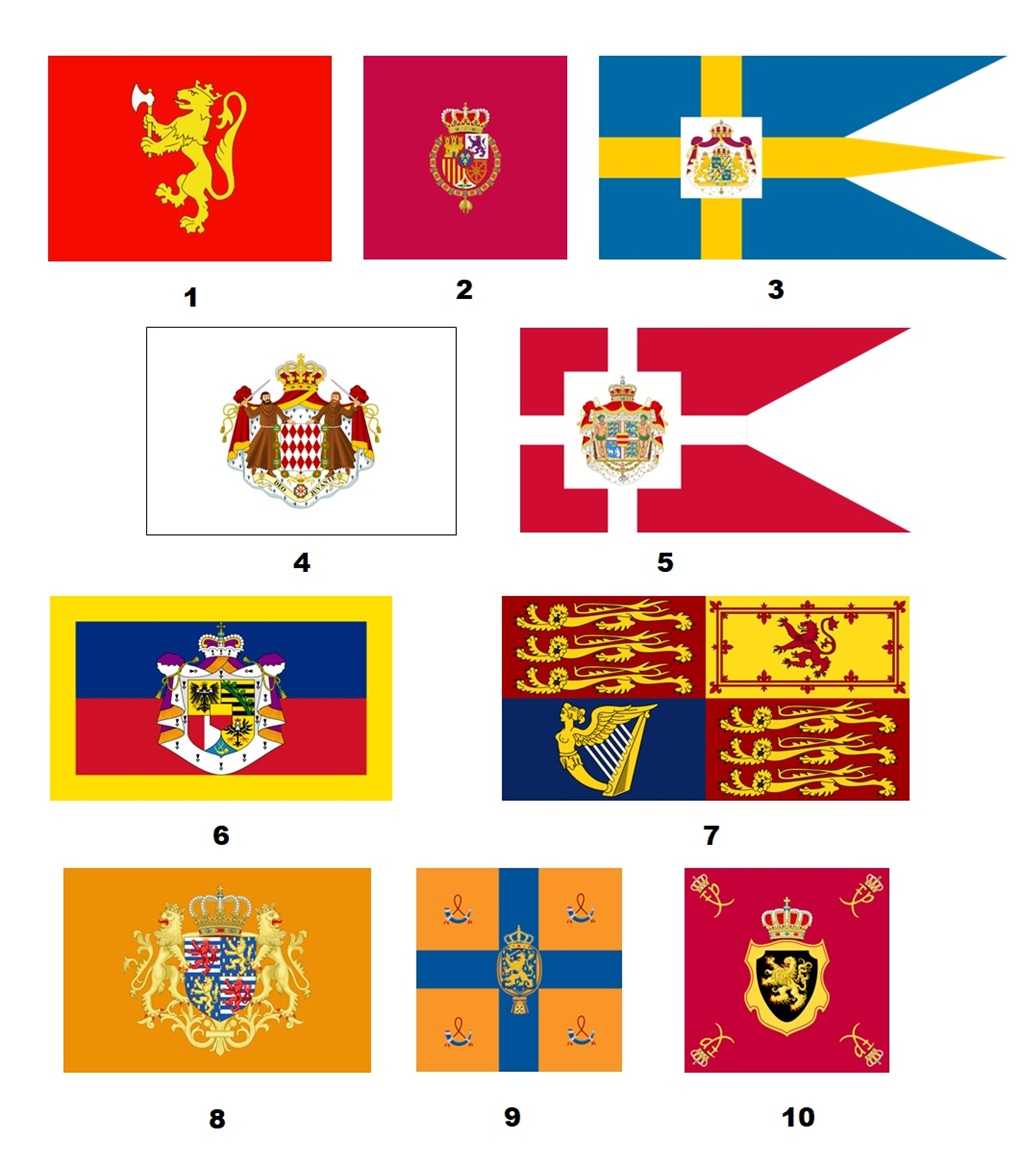
A Royal Standard Trivia Quiz
Europe has ten countries whose Head of State's office comes not by election but hereditary succession. Can you match those ten countries with the Royal Standard of their monarch?
A label quiz
by Red_John.
Estimated time: 4 mins.
